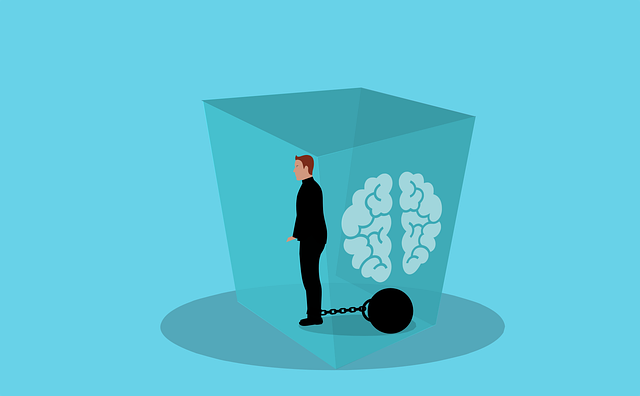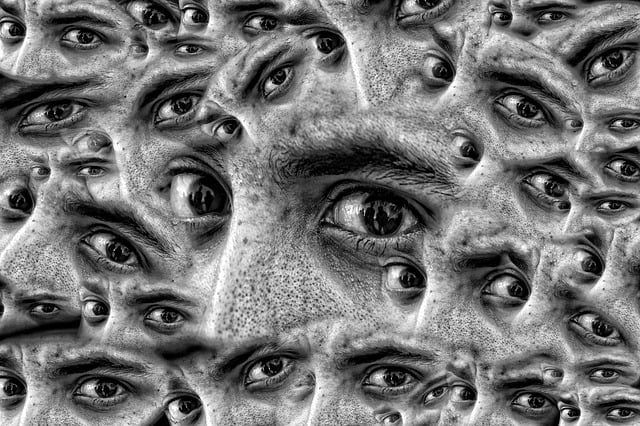TL;DR:
Exposure therapy is an effective anxiety treatment that involves gradual, step-by-step exposure to feared situations in a safe environment. By identifying specific triggers and underlying thoughts, individuals learn to manage anxiety responses, reduce the impact of fears, and develop better coping strategies. This process leads to improved mental health, enhanced insights, and a higher quality of life. Through structured guidance from trained therapists, patients overcome challenges like avoidance behavior and relapse, achieving lasting improvements in their lives. Real-life success stories underscore exposure therapy's potential as a game-changer in managing anxiety disorders.
Exposure therapy is a highly effective anxiety treatment that helps individuals confront and overcome their fears in a safe, controlled environment. By gradually exposing patients to stressful situations or objects, this therapeutic approach empowers them to manage anxiety responses and reshape their emotional reactions. This comprehensive guide delves into the mechanics of exposure therapy, offering insights on identifying specific fears, creating supportive environments, and navigating gradual exposure steps. Learn how this powerful tool can transform lives, as we explore techniques, progress tracking, common challenges, and inspiring real-life stories.
Understanding Exposure Therapy: A Powerful Tool Against Anxiety

Exposure therapy is a highly effective psychological treatment for anxiety disorders. It’s a powerful tool that helps individuals confront and overcome their fears in a safe, controlled environment. By gradually exposing themselves to anxiety-provoking situations, people can learn to manage and reduce their anxious responses over time. This process allows them to realize that their feared outcomes are unlikely to occur, thus reducing the impact of anxiety on their lives.
This therapy is tailored to each individual’s specific fears and anxieties. It starts with identifying the triggers and then creates a step-by-step plan to expose the person to these situations. The exposure can range from imagining the fear-provoking scenario to actually facing it in real life, depending on comfort levels. Through this process, individuals gain valuable insights, learn coping strategies, and develop resilience, ultimately leading to improved anxiety treatment and a higher quality of life.
How Does Exposure Therapy Work? Unraveling the Mechanism

Exposure therapy is a powerful tool in the arsenal of anxiety treatments, offering a direct and effective approach to challenging anxious thoughts and behaviors. Its mechanism revolves around gradual and controlled exposure to feared or avoided situations, allowing individuals to confront their anxieties head-on. By systematically facing these triggers, patients learn that their feared outcomes are unlikely and that their coping abilities are more robust than they initially believed.
This therapy works by reconditioning the mind’s response to anxiety-provoking stimuli. Initially, when faced with a trigger, the body responds with physiological symptoms of fear or anxiety. Through exposure therapy, these triggers become less novel, and the brain’s emotional responses gradually shift. Over time, the individual develops a different perspective, realizing that their fears are exaggerated, leading to reduced anxiety and an improved ability to manage stressful situations in daily life. This process empowers patients, enabling them to take back control and lead more fulfilling lives free from the constraints of anxiety.
Identifying Fears and Phobias: The First Step in Treatment

Identifying fears and phobias is a crucial step in exposure therapy for anxiety treatment. This initial process involves a collaborative effort between the therapist and the individual seeking help. Through open dialogue, patients are encouraged to articulate their specific anxieties, whether it’s a fear of public speaking, closed spaces (claustrophobia), or social interactions. By gaining this understanding, therapists can tailor the exposure therapy to address the root causes effectively.
This identification goes beyond simply knowing what triggers anxiety. It delves into the underlying thoughts and beliefs associated with these fears. Therapists help patients recognize that their fears often distort reality, leading to exaggerated anxiety responses. This awareness is pivotal in reshaping cognitive patterns, which is a key aspect of exposure therapy for anxiety treatment.
Creating a Safe Environment: Preparing for Exposure Sessions

Creating a safe environment is a crucial step in preparing for exposure therapy sessions, serving as the foundation for effective anxiety treatment. This involves fostering a space where individuals feel comfortable and supported, free from judgment or fear of punishment. Therapists achieve this by establishing clear boundaries, ensuring confidentiality, and creating a non-threatening atmosphere. A calm setting with minimal distractions can significantly enhance the patient’s willingness to engage in the therapy process.
Preparing for exposure sessions includes helping clients identify their triggers and fears while teaching them coping strategies. This might involve practice exercises outside of formal sessions to build confidence and resilience. By gradually exposing individuals to anxiety-provoking situations within a safe environment, therapists enable them to confront and manage their fears, ultimately reducing the impact of anxiety symptoms over time.
Gradual Exposure: Facing Fears in Controlled Steps

Gradual exposure is a core component of exposure therapy, a powerful anxiety treatment. It involves a step-by-step process where individuals confront their fears in a controlled and safe environment. By starting with less frightening scenarios and gradually moving towards more challenging ones, this approach helps people desensitize themselves to anxiety-provoking situations. This method allows them to realize that the feared outcomes are unlikely or less severe than anticipated, thus reducing anxiety over time.
Each step in gradual exposure is carefully planned and executed by a trained therapist. They guide patients through scenarios tailored to their specific fears, ensuring they feel supported and safe. As patients successfully navigate each step, their confidence grows, leading to a greater sense of control over their anxiety. This process empowers individuals to face their fears head-on, ultimately reducing the power that anxiety holds over them.
Techniques Used During Exposure Therapy Sessions

During exposure therapy sessions, a trained therapist helps individuals gradually face and interact with situations or objects that provoke anxiety. This is done in a controlled environment, starting from less frightening scenarios and slowly increasing the level of challenge. Techniques include live exposure, where patients confront their fears in real-time, and imagined exposure, where they visualize stressful situations to desensitize themselves. The therapist guides the patient through these experiences, teaching them coping strategies and helping them recognize that their feared outcomes are unlikely to occur.
Through repeated exposure, individuals learn to manage their anxiety responses, reducing both the intensity of fear and the desire to avoid triggering situations. This process aims to change unhelpful thinking patterns and behaviors associated with anxiety, ultimately leading to improved mental health. The therapist may also incorporate relaxation techniques, such as deep breathing exercises or progressive muscle relaxation, to help patients stay calm during exposure exercises, making the therapy more effective for anxiety treatment.
Tracking Progress: Measuring Success and Adjusting Strategies

Tracking progress is a vital component of exposure therapy for anxiety treatment. It involves regularly assessing the patient’s symptoms, behaviors, and emotional responses to determine the effectiveness of the therapy. Through this process, therapists can identify areas where the patient is progressing well and those that require more attention. By measuring success, therapists can adjust their strategies accordingly, ensuring the treatment plan remains tailored to the individual’s needs.
This ongoing evaluation allows for a dynamic approach, where the focus shifts from general anxiety reduction to specific phobias or triggers. It also enables therapists to incorporate new techniques or modify existing ones based on the patient’s response, fostering a more personalized and successful anxiety treatment journey.
Common Challenges and How to Overcome Them

Anxiety treatment through exposure therapy can be highly effective, but it’s not without challenges. One common hurdle is avoidance behaviour—individuals often tend to steer clear of situations or objects that trigger anxiety, which counteracts the entire purpose of exposure therapy. To overcome this, therapists should encourage gradual exposure, starting with less feared scenarios and slowly increasing difficulty. This approach helps patients build confidence in their ability to manage anxiety symptoms.
Another challenge is the potential for relapse. Anxiety disorders are recurrent by nature, so it’s crucial for both therapist and patient to stay vigilant after initial success. Maintaining therapy consistency, using coping strategies learned during exposure therapy, and regularly reassessing progress can help mitigate relapse risks. By staying proactive in managing anxiety, individuals can enjoy lasting improvements in their quality of life.
Real-Life Stories of Anxiety Relief Through Exposure Therapy

Many individuals suffering from anxiety have found solace and freedom through exposure therapy, a powerful tool in the realm of anxiety treatment. Real-life stories of its effectiveness are abundant, with people sharing their transformative journeys. For instance, Sarah, who battled severe social anxiety, describes her experience as life-changing. She recounts how exposure therapy gradually allowed her to engage in social interactions without the overwhelming fear and panic attacks that once plagued her. Through careful exposure to triggering situations, she built resilience and learned coping mechanisms.
Similarly, Mark, who struggled with obsessive-compulsive disorder (OCD), found a new sense of control. He explains that the therapy helped him face his worst fears head-on, gradually reducing the compulsions that controlled his daily life. These personal narratives illustrate how exposure therapy can be a game-changer, offering lasting relief from anxiety disorders and enabling individuals to reclaim their lives.
